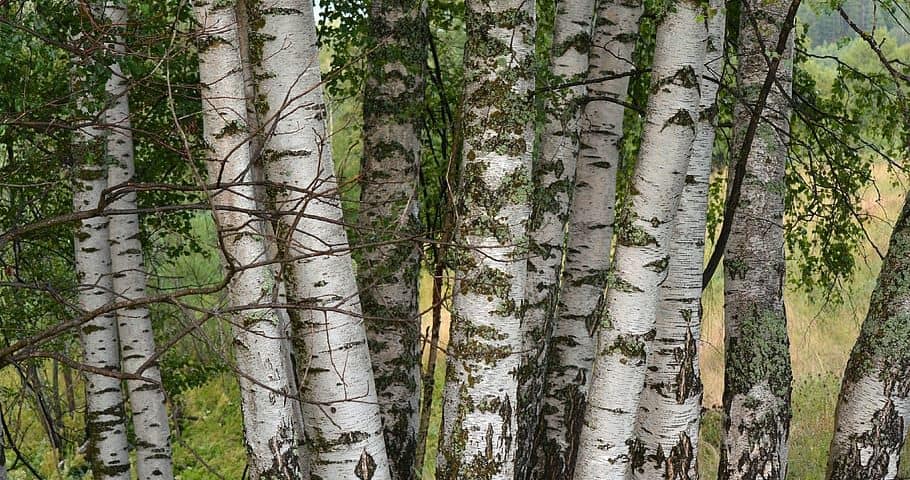You admire birch trees’ slender, upright growth habit and their white bark, yet you’re concerned about birch borer targeting your trees, or maybe birch won’t grow in your area. If you want something similar, you may wonder: what trees are similar to birch?
Contents
Some trees resemble birches by having similarly-shaped leaves or a similar growth habit. The two main options in this regard are the alders and the aspens (known as poplars in Europe). Other trees resemble birch by their white bark, such as certain gum species.
Although no one species of tree can completely substitute for a birch, there are several that closely mimic them or resemble them in some ways. Join us as we look at species of tree that are similar to birch and find something that will suit the requirements of your garden.
1. Alders
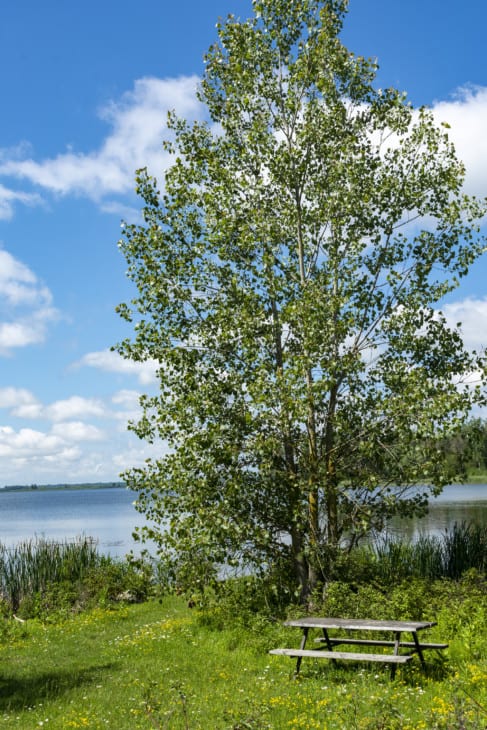
The closest thing you can get to a birch without it being a birch, alders are in the same family as birches, Betulaceae.
They have similar leaves, flowers, and growth habits, with alders admired for their catkin flowers that give way to cone-like fruits.
One thing that distinguishes them is that alder leaves remain green in fall, even when they have fallen to the ground, whereas birch leaves turn vivid yellow.
Gray alder (Alnus incana) and Japanese alder (Alnus japonica) have a mature form similar to a birch tree.
2. Quaking Aspen
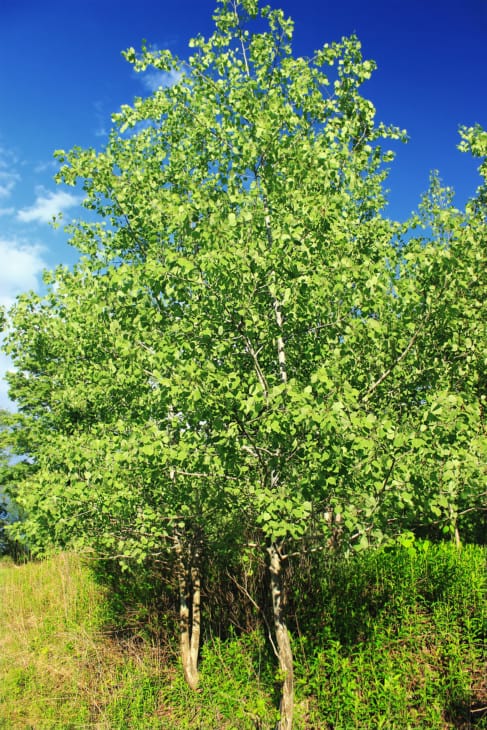
Aspens are often confused for birches, although the shape of the leaves is different on close examination. Aspens also have flattened leaf stalks, making them tremble in the slightest breeze, hence the name quaking aspen for the species Populus tremuloides.
This trembling gives them a distinctive sound.
Like birches, their leaves turn golden in fall. They grow quickly and propagate from suckers. As a result, a small stand of two or three aspens can become a magnificent grove in a couple of decades.
Like birches, quaking aspens flower in catkins. Their bark is a ghostly gray, similar to that of a birch. In nature, they are found all over the colder areas of the US, from New England to Colorado.
3. White Poplar
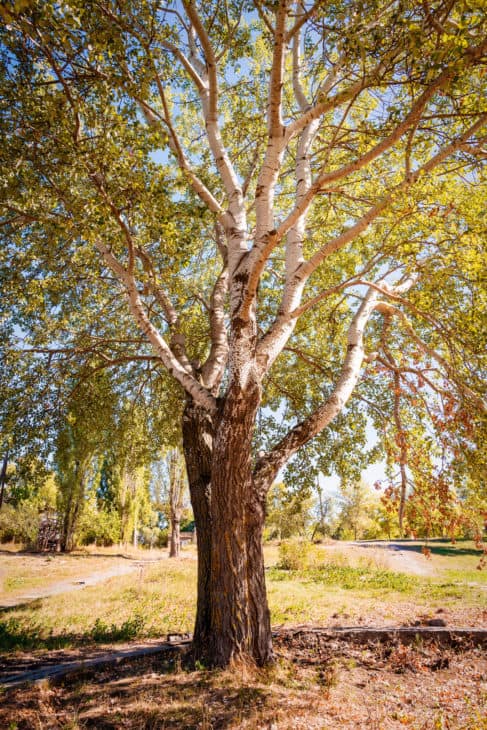
The white poplar, Populus alba, has an upright growth habit and grayish-white to greenish-white bark with dark, diamond-shaped markings. It is also known as the silver poplar or silverleaf poplar.
They have five-lobed, dark green leaves with distinctive grayish-white undersurfaces.
Like other non-native poplars, it has invasive traits, so be careful about this tree’s potential to spread aggressively.
The Eurasian poplar, Populus tremula, closely related to the quaking aspen, has more grayish bark and is present in the US as an invasive species.
4. Ghost Gum
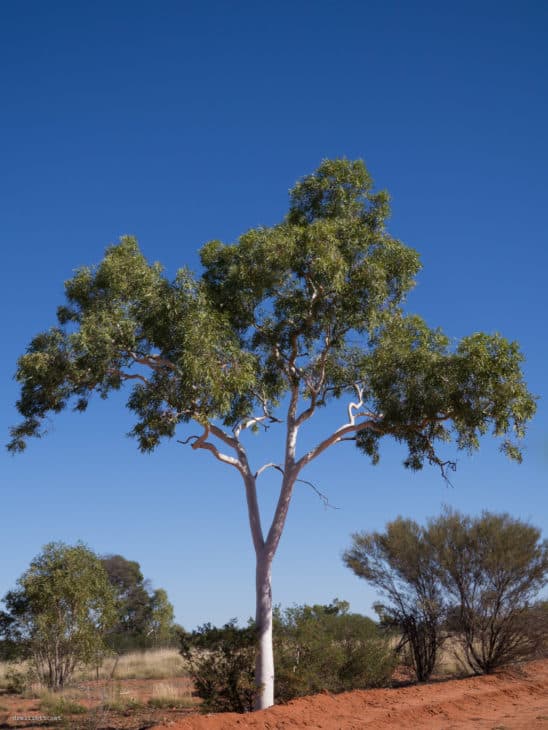
Native to the central parts of Australia, ghost gum (Corymbia aparrerinja) is a fast-growing, drought-tolerant evergreen species suitable for zones 8 through 10.
Its leaves are olive in color and smell slightly of eucalyptus, but it is the smooth, pink-tinged white bark of its trunk and branches that makes it stand out.
It has a similar height and spread as birch and bears white flowers from October to December.
5. Spinning Gum
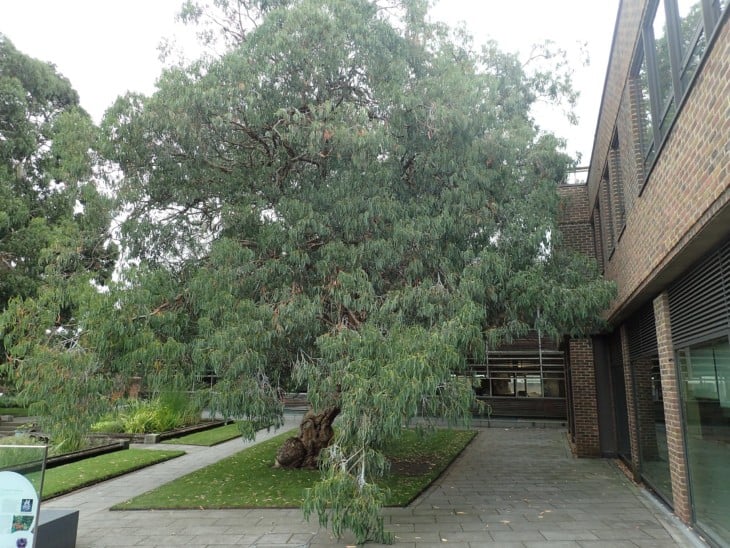
The spinning gum, Eucalyptus perriniana, has completely round perfoliate young leaves (leaves that encircle the stem); these become more pendulous with age. Young leaves are bluish-green, older leaves silver-green, and the bark white or gray.
It is native to woodland on high-lying plains of New South Wales, the Australian Capital Territory, Victoria, and Tasmania, thriving in areas that receive snow for several months.
It will get damaged by temperatures below 8 degrees Fahrenheit, but regrowth is rapid, and it will regain its full height in a few seasons. It does best in zones 7 and 8.
It produces white flowers in the winter.
6. White Gum
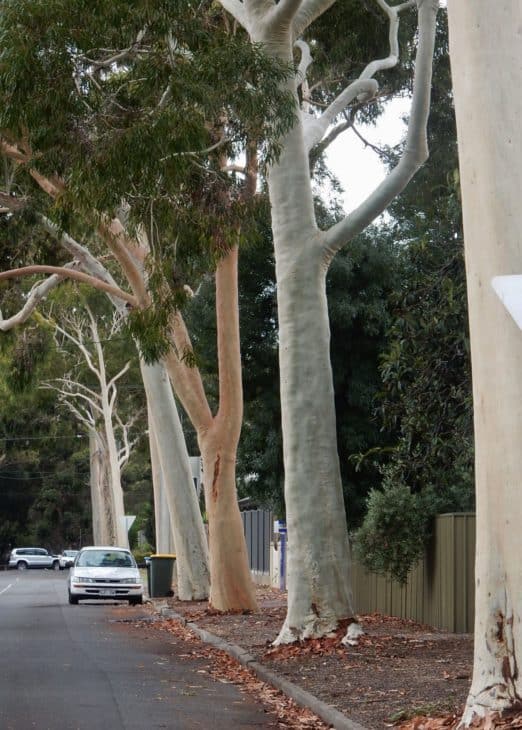
The white gum, poplar gum, or khaki gum, Eucalyptus alba, has smooth pinkish red to white or cream-colored bark. The trees grow from sixteen to sixty feet tall, with a spreading crown. The trunk is often bent.
It comes from the Kimberley region of Western Australia, northern Queensland, Timor, and New Guinea, growing in open woodlands, and is suitable for zones 9 and 10. It grows on ridges and elevated areas in poor soil. Its flowers attract bees and birds.
7. Snow Gum
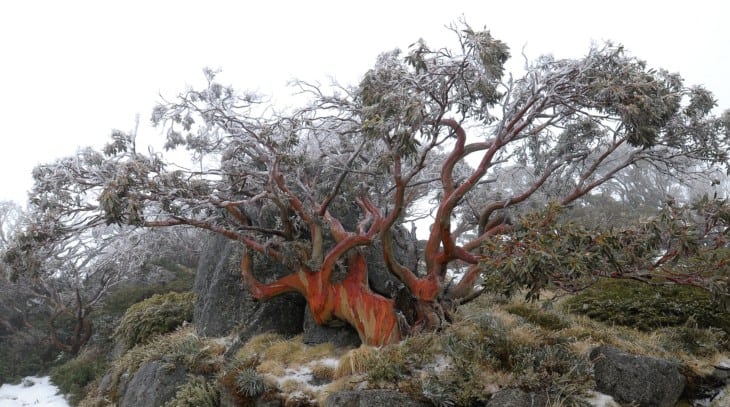
The snow gum or white sally, Eucalyptus pauciflora, comes from the eastern parts of Australia, being common in woodland at elevations above 2,300 feet.
As a result, it is very cold-hardy, and E. pauciflora subsp. niphophila will tolerate temperatures as low as -9 degrees Fahrenheit and year-round frosts. It has been introduced to Norway!
It has a twisted trunk and smooth white, gray, or yellowish bark that peels off in ribbons to reveal a cinnamon-brown color.
It grows twelve to fifty feet tall and bears white flowers in the spring and summer.
8. Upright-Growing Prunus
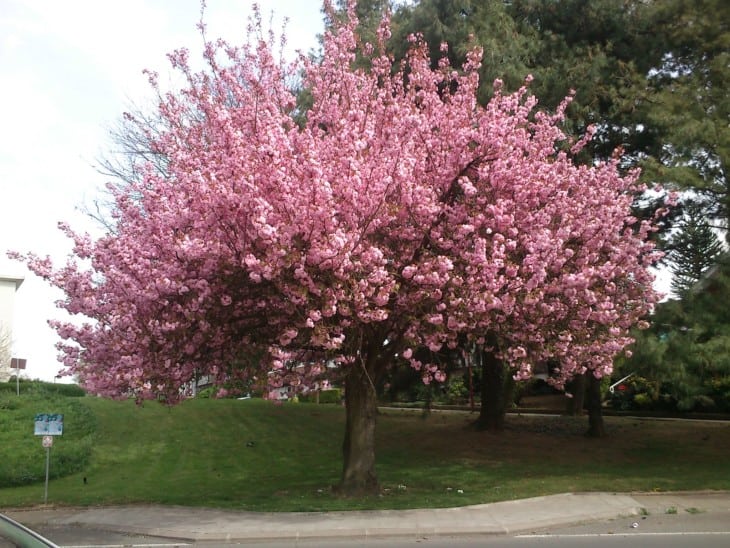
For a small tree that offers a beautiful display of blossom in the spring and mimics the upright growth habit of a birch, why not consider an upright-growing ornamental Prunus species?
Choose from flowering cherry (Prunus serrulata), plum (Prunus cerasifera), apricot (Prunus mume), or almond (Prunus glandulosa).
They grow well in sunny spots and don’t take up much space. Prunus cerasifera ‘Atropurpurea’ has beautiful reddish-purple foliage in the fall.
9. Pearl Acacia
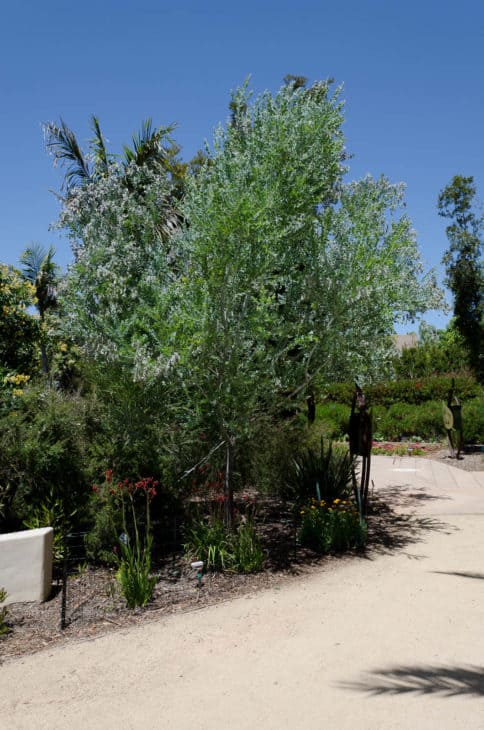
The pearl acacia (Acacia podalyriifolia) is a sun-loving tree like the birch. However, this drought-tolerant tree can grow in zones 8 through 10. It initially grows straight but spreads on maturity. Pruning can keep the growth habit more similar to that of a birch.
It has silvery-gray, broad evergreen leaves (technically phyllodes), smooth grayish bark, and showy yellow flowers. It comes from Queensland.
10. American Sycamore
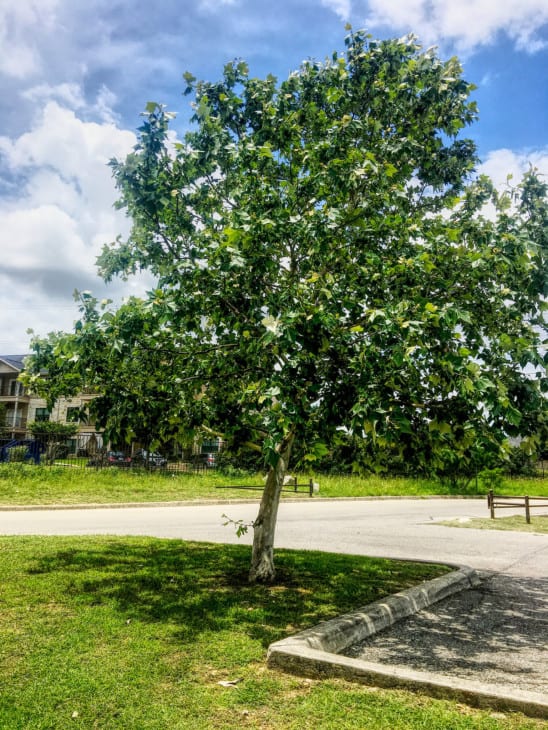
The American sycamore, Platanus occidentalis, is only suitable for more extensive gardens, as it reaches one hundred feet at maturity with a spreading crown.
The primary way it resembles a birch is the bark, which starts brown and gradually changes to a dramatic white after roughly a decade.
Like the birch, it is also deciduous. It has green leaves up to nine inches wide.
The California sycamore, Platanus racemosa, is a similar species.

